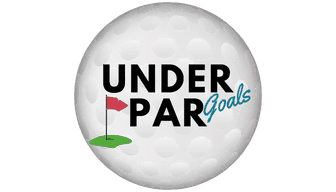Irons are the most used clubs in the bag and having a set that fits your game and are fitted properly can make a huge difference in your scores.
Every year, I take a look at all the new irons on the market, test them out and share with you the best ones and the ones that fit your specific needs.
Here are the top picks to save you some time, but if you want to see which ones might fit your game specifically, be sure to scroll down and keep reading…
Callaway Apex 21
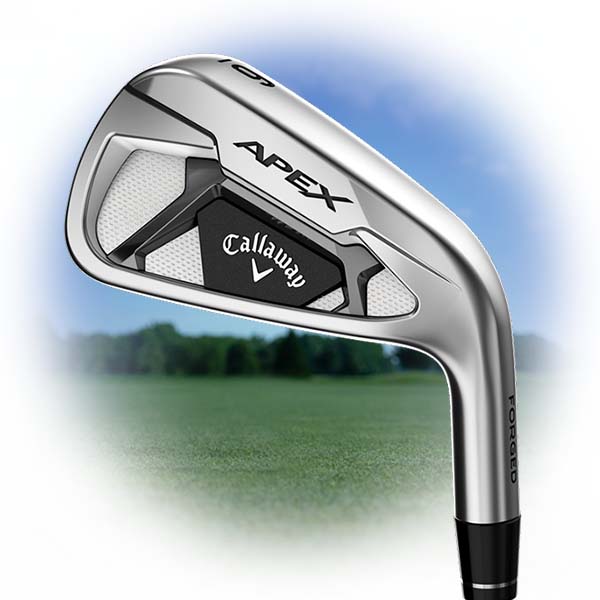
Check Top Retailers
The Callaway Apex 21 irons are the perfect blend of control and forgiveness for the widest range of golfers out there. Callaway just knows how to make good clubs for the most number of players.
Mizuno JPX 921 Forged
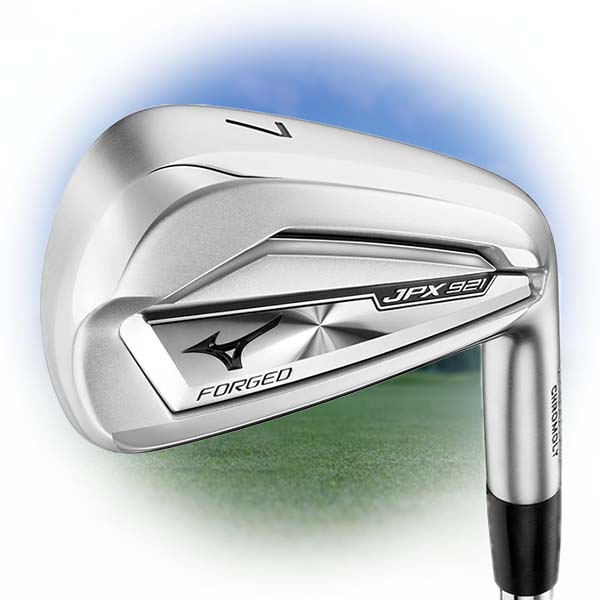
Check Top Retailers
The Mizuno JPX 921 Forged offers the classic Mizuno feel and control but in a more forgiving package that will make a lot of golfers never want to play another brand of iron.
TaylorMade M4
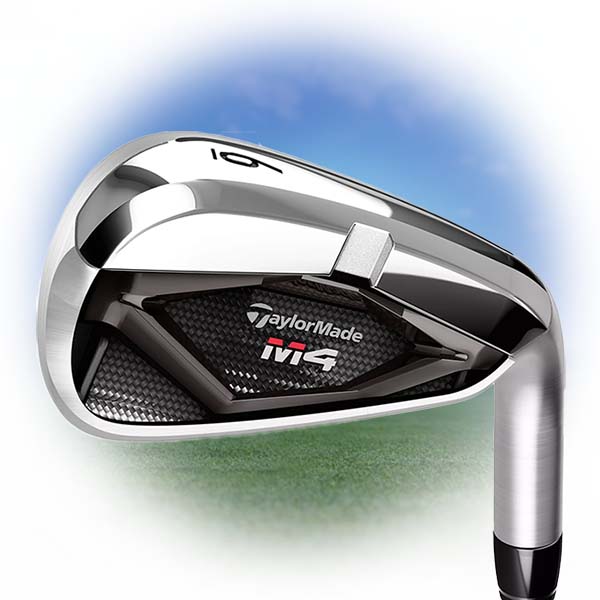
Check Top Retailers
Available at most retailers for a discount now, the older, but still exceptional, TaylorMade M4 irons offer a ton of game improvement tech at an affordable price.
Best Golf Irons Based On Your Game
While we all love to debate which are the “best irons,” the reality is that you should be choosing irons that fit your skill level, not what the latest Hot List tells you to buy.
So to help break through some of that bad information out there, I break down my top picks based on skill level and the type of player you are. We’ll start with beginners and work all the way to scratch golfers.
Be sure to click the links below to check out a more complete breakdown of my top picks for each skill level…
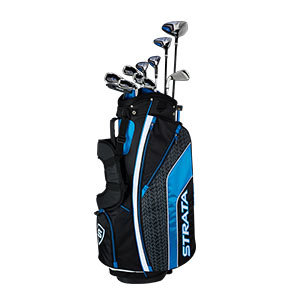
Callaway Strata
This complete set comes with everything you need to get started (even the bag) at an affordable price but still has the Callaway quality and forgiveness that millions of golfers love.
If you’re just getting started with this sport, then you probably don’t want to spend a ton of money just to play. So that’s why I recommend a set like this to beginners.
Callaway makes great quality clubs that will last you a long time and these are no exception despite their low price tag. Because the set comes with everything you need to get on the course, you don’t have to worry about all the other expenses that pop up like getting a bag and a putter.
Pros
Cons
Affordable
Has everything you need to get started
Good forgiveness
Less durable than more expensive irons
You’ll want to upgrade as you play more often and get better
Despite this being a “beginner’s” set, these clubs still pack a lot of Callaway technology in the club heads. They are forgiving enough that you won’t get frustrated while you’re learning the game. The irons have a wide sole that will help minimize the negative effects of a fat shot (hitting the ground before the ball).
Check out my complete breakdown of the best irons for beginners here.
The approach I suggest to beginners is to start with a set like this and then as you play more, upgrade your set piece by piece. Get a new driver one year, then irons the next, and so on. That makes building a custom bag much less painful on the wallet!
But, if you already know you’re in it for the long term and want to get a set of irons that will last a long time, then feel free to skip ahead to our other picks below.
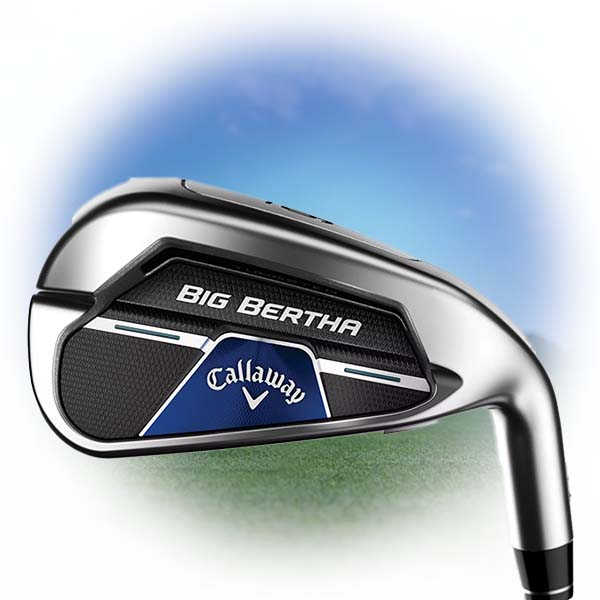
Callaway Big Bertha
These irons are among the most forgiving on the market and will help to maximize distance, even on mis-hit shots.
High-handicap golfers (those in the 15+ handicap range) are different from beginners in that they already know they want to play golf on a regular basis, so at this point, it’s time to invest in some higher quality clubs that are going to help you enjoy the game more as you work to improve your swing.
The Callaway Big Bertha B21 Combo Irons give you exactly what you need as at this level. These clubs are designed specifically for the weekend warrior that may not have their swing mechanics down quite yet but still wants to enjoy the game.
The B21 Irons are designed to give you a higher launch with less spin. This means more distance with the same swing speed compared to other irons.
Pros
Cons
Lots of game improvement tech
Flies farther than most irons
High ball flight from low GC
Expensive
The clubhead design is also quite forgiving. So when you miss the center of the clubface (which might be quite often) you’ll see less drop-off in distance than with other clubs. They also have a nice wide sole which helps to prevent the club from digging into the ground on fat hits and can save a lot of shots from being complete duffs.
I would recommend going with the mixed set that replaces the long irons with hybrids. Some PGA Tour pros even do this so why wouldn’t you make the game a little easier for yourself.
Check out our full breakdown of the best irons for high handicappers.
As you work on your swing and improve your strikes, then you can move to a set like the one below…

Callaway Apex 21
The Apex fits perfectly in the gap between Callaway’s larger more forgiving irons and difficult-to-hit players’ irons.
Mid-handicappers (in the range of 8 to 15 HCP) are typically going to want a club that gives them a little more control over trajectory but don’t want to give up much forgiveness.
The downside to clubs for high handicappers is that they almost all have a low center of gravity (CG) to help the ball get up in the air and fly farther. But that limits your ability to control the height and trajectory of the golf ball.
While I never recommend that golfers try to work the ball left and right on command, I do think that every golfer at this mid-cap level should be able to hit the ball lower when they need to (into the wind, under a branch, etc.).
So that’s why I went with the Apex 21 irons for this skill level. Yes, I know the first three are from Callaway. I promise you, we are not paid or sponsored by Callaway, but when it comes to mid-handicaps and higher, they just deliver on exactly what you need.
Pros
Cons
Smooth forged feel
Excellent forgiveness
Faster ball-speed of the face
Less forgiving than larger irons
Low spin numbers can mean inconsistent distances
The Apex 21 is a mid-sized cavity back with perimeter weighting, so it does do a decent job at minimizing the distance loss on off-center hits. The sole isn’t as wide as the other clubs above, but it’s not “blade thin” either, so you have a little margin for error on mis-hits.
What I really like about the APex 21 irons for this skill level is that (1) the CG isn’t so low that every shot goes sky high and (2) you are going to get some negative feedback when you miss the sweet spot (which is good for those of you trying to get into that next level of low handicappers).
For more, check out my complete breakdown of the best irons for mid-handicappers here.
For those of you closer to that 15 handicap level, I would recommend trying out the Apex 21 and the Big Bertha and deciding which one you like better.

Mizuno JPX 921 Forged
Classic Mizuno feel and looks with a little bit of game improvement design to help you with those occasional mishits.
Low handicap players (below 8 HCP) want even more control over their iron shots and are less worried about mis-hits because they happen less often and when they miss the sweet spot it isn’t by that much.
But, even if you’re at this level, I would caution you against using pure blade irons. There really isn’t any benefit in using them over a good player’s iron cavity back and even most PGA Tour Pros don’t use blades anymore. I explain this in more detail in my article comparing blades vs. cavity back irons.
What To Look For When Choosing An Iron Set
Forgiveness
How forgiving an iron is should be among the primary factors that you look at in choosing the right one for your game.
Forgiveness is the degree to which a club will maintain ball speed on hits that miss the sweet spot. This helps a player get more consistent distances even when their swing isn’t quite that consistent.
The way that most iron manufacturers accomplish this is by making the clubhead larger and adding more mass around the perimeter of the club rather than in the middle. In general, more forgiving clubs are going to be larger.
The width of the sole also contributes to forgiveness. A wider sole resists digging into the turf more than a narrow sole. This means that if you hit a little behind the ball (a fat hit) the club can skip across the turf rather than dig into it, resulting in a much better strike than you probably deserve!
Control
Many golfers assume that smaller irons give you more control to work the ball left and right. That’s not really true and even the biggest most forgiving clubs will let you curve the ball sideways. Just look at the number of players on your local course that are slicing the ball 20 yards even with short irons and you can confirm that.
However, more forgiving irons also have a lower center of gravity (CG) to help get the ball flying higher and farther. The negative effect of this is that the lower CG makes it more difficult to lower the trajectory of the ball when the shot calls for it such as hitting into the wind or keeping the ball below an obstruction.
Most higher handicap players should be totally fine with this tradeoff because the lower CG will help a lot more than it hurts. But as you get better and especially if you are a better player with a higher swing speed, then the lower CG is less important.
At that point, you will want a set of irons that allows you to flight the ball down when needed. This can help a lot with distance control as well. Most elite players are hitting their wedges and short irons a lot lower than you might think.
Feel
How an iron feels is a very subjective thing, but it can be quite important to many golfers.
Part of the feel of a club is simply how it feels to you when you hit the ball. That buttery soft feeling of striking the sweet spot on a set of players’ irons is something every golfer loves. But don’t sacrifice forgiveness and playability to chase that feeling with a set of irons that don’t match your skill level.
Another aspect of feel is getting feedback on mis-hits. In general, the smaller the iron and the less perimeter weighting it has, the more you’ll get that vibration sting in your hands when you miss the sweet spot.
Over time, many players can even figure out where on the face the ball missed just by how it feels. This can be very helpful in being able to diagnose some swing faults in the middle of a round and correct them. But again, this isn’t important enough to play an iron that is too small for your skill level.
Getting Fit For Golf Irons
Finding the right irons for your skill level is only part of the equation when it comes to getting new clubs. You also need to be fitted correctly for the irons you choose.
The good news when it comes to irons is that the fitting process is a little easier than other clubs like the driver. There are generally two things you need to worry about, shaft selection and lie angle.
Shaft Selection
It’s a misconception that only players with high swing speeds can use stiff shafts or low swing speeds can use more flexible shafts. The deciding factor is more about feel than pure numbers.
Most male golfers will want to play either a regular flex or stiff flex shaft. Try both and see what you like better. Go with a steel shaft unless you’re having trouble generating enough swing speed to get the ball up in the air.
Women will generally want to start with a women’s/ladies flex or a regular flex shaft.
If you have a slower swing speed, selecting a lighter shaft is probably more important than getting a flexible shaft. The reduced weight will help you gain a few miles per hour of swing speed. There are lighter steel shafts available but generally, graphite shafts are your best bet for reducing weight.
Of course, there are always exceptions to these generalities, but those are good guidelines for getting started.
Lie Angle
Lie angle is very important. I break down the effects of a flat vs. upright lie angle in this article.
The good news here is that most irons can be adjusted after the fact by 2-3 degrees either way. Depending on the materials the head is made with, some clubs can be adjusted even more.
In general, most amateur golfers have an over-the-top and steep swing with their irons, so manufacturers make their irons more upright to cater to the masses. But unfortunately, that just perpetuates those bad habits.
So when you are getting fitted for lie angle, it helps to go to an instructor rather than just a store with a lie angle machine so they can tell you if you should be using clubs that are flatter in order to improve your swing.
